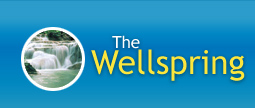Implications for Schooling
The implications of this material are tremendous. Our educational system relies heavily on language as the medium of instruction, and delivers knowledge in piecemeal, segregated subject areas in an unemotional, unsocial environment with little, if any, connection to students' personal concerns. While the system favors students that process linearly, take in information auditorially and visually, look at the teacher, and restate pieces of information in a logical, linear fashion, Hannaford finds that these students make up, on average, only 15 percent of a test population. She shows how teaching children to "sit still," learn letters and numbers in a linear fashion (that includes printing, a very linear, logic left hemisphere process), and read books with a simplistic vocabulary, no emotions and few images, runs counter to whole-brain learning, for which the imagination, emotions, and movement need to be involved. These practices manifest in high stress levels and "learned helplessness." Long-term gains are sacrificed for short-term illusory results. When homeschooling our daughter, she would often spontaneously jump up from her seat to run around the house, jump on the trampoline, even up and down on the spot, and then just settle back into what she was doing. I loved that she had the freedom to do this, though I didn't understand at the time how integral this was to her learning.
Hannaford tells us that books like Yes I Can elicit no images for the child. Three-letter words appear simple but in reality are far more difficult than dinosaur because they hold no internal image of emotion. Learning to print block letters as the first step in writing defies the natural development of the brain until after seven, which is when schools teach cursive--the style that the very young can best relate to because of its natural rhythm and flow. I saw this with Siena and her friends in our home schooling group. When the girls indicated an interest in learning "letters" we began teaching them to print the ABCs, forming the letters perfectly and encouraging them to do likewise. Within a short time they began doing "fancy letters," as they called them--incorporating little curves and designs into the letters. My first impulse was to get them to do it "properly," but then thinking I might be cramping the style of three budding artists, I left them to it.
Thinking and learning are anchored by movement--doodling, eye movement, speaking aloud to self or other. Many of us think better while engaged in a repetitive, low concentration physical activities--swimming laps, walking, showering, shaving, knitting. When new ideas are presented, if students are able to verbalize ideas and work with others on group projects the thought becomes anchored in understanding and memory. Movement activates mental capacities, integrates and anchors new information and experience in our neural networks, and is vital to the action by which we embody and express our learning. Learning is not complete until there is some output, with some physical, personal expression of thought, for it's through expression we advance and solidify our understanding.
Hannaford addresses the need to recognize learning style differences, such as those developed by Howard Gardener's Multiple Intelligences. She advocates that curriculum developers recognize that learning is facilitated when the emotions and social relationships are actively engaged in the process; and synthesize whole mind/body processing through art, music, and movement in conjunction with cognitive skills.

